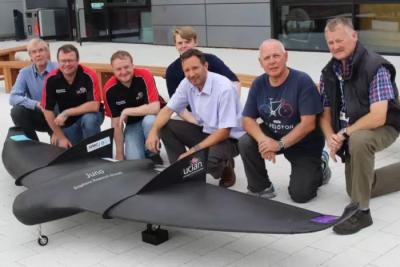Scientists have unveiled Juno: a three-and-a-half-meter wide graphene-skinned aircraft that was given its first public airing on the North West Aerospace Alliance (NWAA) stand as part of the ‘Futures Day’ at Farnborough Air Show. Haydale has supplied the enhanced prepreg material used to make the Juno.

The unmanned vehicle was developed in a partnership between Haydale, an aerospace engineering team from the University of Central Lancashire, the Sheffield Advanced Manufacturing Research Center and the University of Manchester's National Graphene Institute. The partners have been working on the project to get the super lightweight plane ready for action. Billy Beggs, UCLan’s Engineering Innovation Manager, said: The industry reaction to Juno at Farnborough was superb with many positive comments about the work we’re doing". Having Juno at one the world’s biggest air shows demonstrates the great strides we’re making in leading a program to accelerate the uptake of graphene and other nano-materials into industry". He added: The program supports the objectives of the UK Industrial Strategy and the University’s Engineering Innovation Centre (EIC) to increase industry relevant research and applications linked to key local specialisms. Given that Lancashire represents the fourth largest aerospace cluster in the world, there is perhaps no better place to be developing next generation technologies for the UK aerospace industry.
Haydale stated that the material it had developed for the aircraft had potential value for fuselage and wing surfaces in larger scale aerospace applications as well as for the drone market, adding that the use of nanoparticles in the material would improve electrical conductivity for lightning-strike protection as well as saving weight. The Company added that the technology also had performance benefits for a wide range of applications including offshore wind turbines, marine industries, oil and gas, and electronics and control systems.

